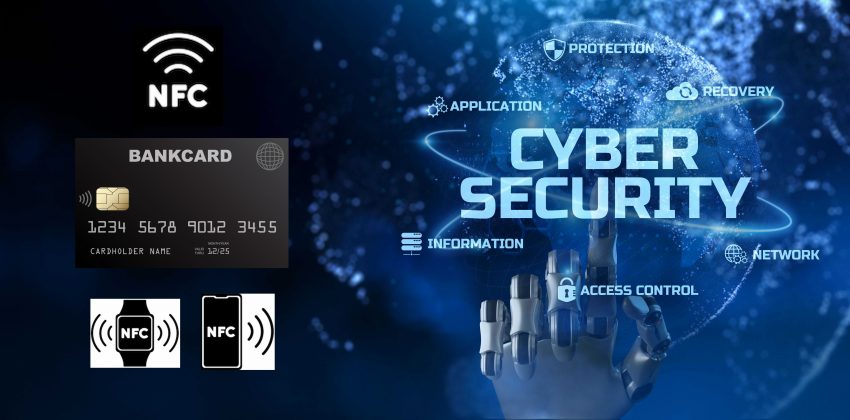Near Field Communication (NFC) technology is increasingly becoming an integral part of our lives. From contactless payments to quick device pairing and data transfer, NFC provides a convenient and efficient way to perform various tasks. However, just like any other technology, NFC is not immune to cybersecurity threats. Understanding the potential risks associated with this technology can help consumers protect their sensitive information. In 2021, card issuers, merchants, and consumers worldwide suffered a gross fraud loss of $32.34 billion. By 2024, 1.6 billion devices will be enabled with NFC. The number of NFC enabled devices will continue significantly increase in the near future.
“As technology advances, so should our vigilance. Consumer protection in the age of innovation is not a luxury, but a necessity.” – Matthew D. Ferrante, CISO
Understanding NFC Technology
NFC is a short-range wireless communication technology that allows two devices to exchange data when they are brought within a few centimeters of each other. This close proximity requirement typically makes NFC a secure method of data transfer, but it does not entirely eliminate potential risks. Find out more about NFC Technology.
Cybersecurity Risks of NFC
Data Interception
Despite the short range of NFC making data interception difficult, it is not impossible for a determined cybercriminal with sophisticated equipment to capture the data during transmission. This could potentially expose sensitive information like credit card details or personal identification information.
Unauthorized Transactions
If an NFC-enabled device is lost or stolen, it could be used to make unauthorized transactions, particularly if the device has mobile wallets set up. While many payment applications require secondary authentication, not all do, posing a risk.
Eavesdropping
Eavesdropping on NFC communication involves a hacker “listening in” on the data exchange between two NFC-enabled devices. Although challenging due to the required proximity, a hacker with the right equipment could potentially gain access to sensitive information.
Data Corruption or Manipulation
Data transmitted via NFC could potentially be altered or manipulated by an attacker. For instance, an NFC tag’s information could be modified to mislead users or to redirect them to malicious websites.
Malware Injection
A compromised NFC tag or device could be used to deliver malware to an unsuspecting user’s device. If a user’s device is set to read NFC tags automatically, the device could be infected simply by getting too close to a malicious tag.
Cloning
This involves the unauthorized replication of NFC-supported devices like contactless payment cards. Hackers create a duplicate of sensitive data stored and use the copied data to bypass security. Methods of how this might occur include the attacker using an NFC reader to capture the data from the victim’s NFC-enabled card or device. This typically requires the attacker to bring their reader into close proximity to the target, usually within a few centimeters. Although NFC is usually encrypted, but not not all systems use strong or effective encryption methods. The attacker may be able to decode the captured data, revealing sensitive information such as credit card details or personal identification information which can be used for identity theft. Once the attacker has captured and decoded the NFC data, they can then write this data onto a blank NFC-enabled card or device. This creates a cloned version of the original card or device. The attacker can now use the cloned card or device to perform transactions or other actions as if they were the original owner.
Social Engineering
This is a form of manipulation, where the hacker deceives you into believing they are a legitimate service provider to make unauthorized transactions or connecting your device to malicious NFC tags.
Skimming
Involves capturing a victim’s sensitive information from payment cards or credentials from a rogue NFC reader. Be especially wary of public payment terminals.
NFC Relay Attack
This is a form of a ‘man-in-the middle’ attack. The attacker intercepts the NFC communications between two parties and relays the data to another device.
Mitigating NFC Cybersecurity Risks
While these risks can sound alarming, there are several steps consumers can take to protect themselves:
- Enable NFC Only When Required: Disabling NFC when it is not in use can prevent unauthorized transactions or accidental interaction with compromised NFC tags.
- Use Secondary Authentication: Enable secondary authentication methods for payment apps, such as biometric or PIN verification, to add an extra layer of security.
- Be Aware of Your Environment: Only use NFC functions in trusted and secure environments. Be particularly cautious when using NFC to interact with unfamiliar devices or tags.
- Update Regularly: Keep your device’s software up-to-date, as updates often come with security patches that fix vulnerabilities.
- Install Security Software: Use a reputable security software on your device to detect and block potential threats.
The potential risks associated with NFC should not deter users from leveraging this convenient technology. Instead, by understanding these risks and taking necessary precautions, users can enjoy the benefits of NFC while safeguarding their personal information. Technology, when used responsibly, can provide both convenience and security.
“In cybersecurity, knowledge is crucial, but it’s the application of knowledge which forms our strongest defense against digital threats.“ – Matthew D. Ferrante, CISO
Citanex, show me how to enable NFC on my mobile device
Leveraging NFC Technology for Business (Coming Soon)
Tech specs on NFC technology (Coming Soon)




